Etude de bruit de fond induit par les muons dans l'expérience ...
Etude de bruit de fond induit par les muons dans l'expérience ...
Etude de bruit de fond induit par les muons dans l'expérience ...
Create successful ePaper yourself
Turn your PDF publications into a flip-book with our unique Google optimized e-Paper software.
tel-00724955, version 1 - 23 Aug 2012<br />
1<br />
12 The Dark Matter problem<br />
Figure 1.7: Hubble diagram of distance vs. velocity by the Hubble Space Te<strong>les</strong>cope<br />
Key Project. A slope of H0 = 72 is shown with its ±10% lines. The bottom box<br />
shows the Hubble constant vs. distance and the horizontal line is the best fit to data.<br />
Figure from [23].<br />
the existence of nonbaryonic dark matter. Big bang nucleosynthesis is a nonequilibrium<br />
process that took place over the course of a few minutes in an expanding,<br />
radiation-dominated plasma with high entropy and many free neutrons [24].<br />
The predictions of big bang nucleosynthesis for the light element abundances<br />
are shown in Figure 1.8, in which the boxes and arrows show the current estimates<br />
for the light element abundances and they are consistent with the corresponding<br />
predictions. The primordial abundances of these elements <strong>de</strong>pend critically upon<br />
the conditions during the period when such fusion was possible, and in <strong>par</strong>ticular<br />
on the baryon-to-photon number ratio η ≡ nb nγ × 10 10 .<br />
At times much <strong>les</strong>s than a second after the big bang, there were roughly equal<br />
numbers of electrons, positrons, neutrinos, antineutrinos and photons. The ratio<br />
of photons to nucleons, i.e. protons and neutrons, was more than a billion to one.<br />
The nuclei had not been formed and the ratio of neutrons and protons was unity<br />
due to the weak processes that interconvert them. At about one second, when the<br />
Universe had cooled to around 10 10 K, the weak processes were not able to keep<br />
the same number of neutrons and protons. And at the temperature of ∼ 109 K<br />
the first formation of D, 3H, 3He and 4He took place. As the Universe continued to<br />
expand and cool, the processes maintaining equilibrium slowed down relative to the<br />
temperature evolution and, after five minutes, most neutrons were in 4He nuclei, and<br />
most protons remained free. There was also formation, in much smaller amounts, of<br />
D, 3He, 7Li but the low <strong>de</strong>nsity and temperature caused the elemental composition<br />
of the Universe to remain unchanged until the formation of the first stars several<br />
billion years later.


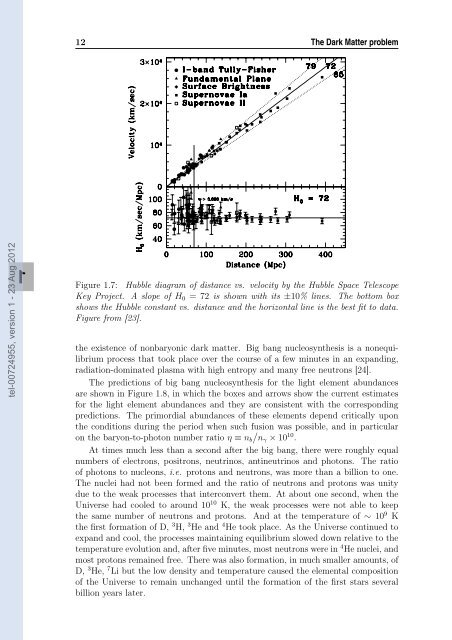

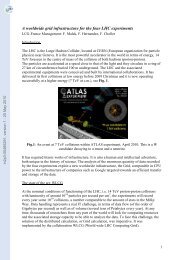

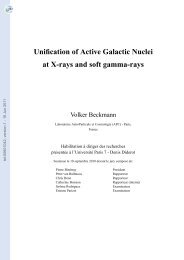

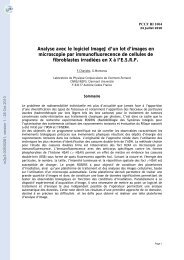
![[in2p3-00383985, v1] NUCLEAR PHYSICS at GANIL ... - HAL - IN2P3](https://img.yumpu.com/19016755/1/185x260/in2p3-00383985-v1-nuclear-physics-at-ganil-hal-in2p3.jpg?quality=85)
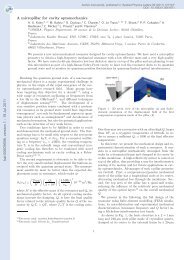
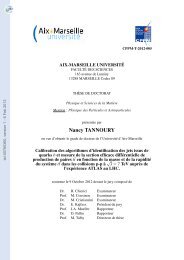
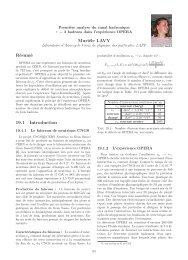
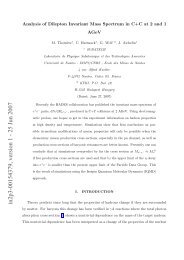
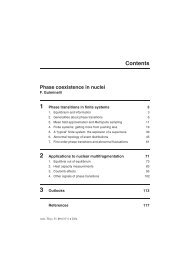
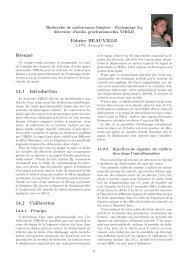
![[tel-00752304, v1] Pions réels et virtuels dans les noyaux](https://img.yumpu.com/19016523/1/184x260/tel-00752304-v1-pions-reels-et-virtuels-dans-les-noyaux.jpg?quality=85)